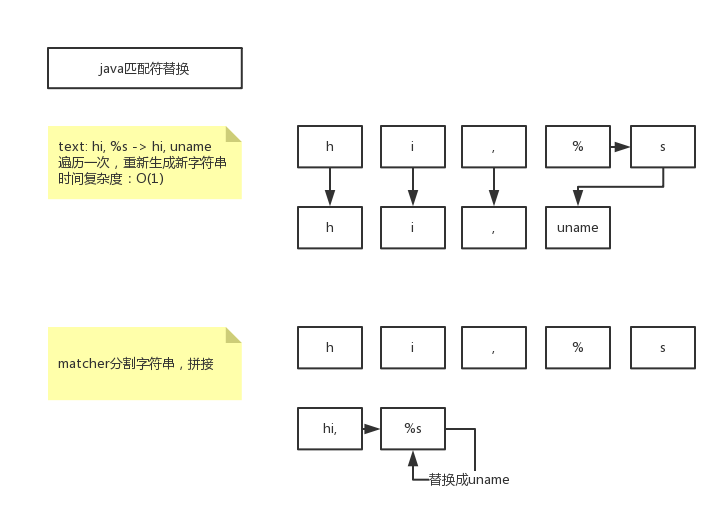Java常用通配符的替换及定制实现。
- String.format(“hi, %s”, “uname”)
- log.info(“hi, {}”, “uname”)
自行实现
思路:
- 方法体 format(Object… value);
- 实现方式:字符匹配替换,Matcher类find。
Pattern类的作用在于编译正则表达式后创建一个匹配模式.Matcher类使用Pattern实例提供的模式信息对正则表达式进行匹配.matcher.appendReplacement() 与 matcher.appendTail().
前者是将当前匹配子串替换为指定字符串,并且将替换后的子串,以及其之前到上次匹配子串之后的字符串段添加到一个 StringBuffer 对象里。后者则将最后一次匹配工作后剩余的字符串添加到一个 StringBuffer 对象里。
1 | private StringBuilder buffer; |
执行结果如下
hello world, lsq, Time:1526978430709!
String.format实现过程
- 分析源码得到其通过java.util.Formatter实现。
- 代码比较简洁,贴出用来作为对比。
- 先通过Matcher从字符串中查找分隔符,拆分成FOrmatString数组,在进行分段print输出。
1 | public static String format(String format, Object... args) { |
org.slf4j.Logger.info实现过程
org.slf4j.helpers.MessageFormatter.arrayFormat()

总结
Formatter是广泛被用到的格式化方法,它能让一些东西变得更加有规范,很多超市小票,信息单,用这个方法来格式化就显得很不错。
String.format 这个方法很实用,但如果是大批量进行字符串格式化,就需要考虑到性能方面的问题,因为每次调用 format() 方法都会 new 一个 Formatter 对象。而在 Java 中频繁创建对象需要大量时间,而且还要花时间对这些对象进行GC。